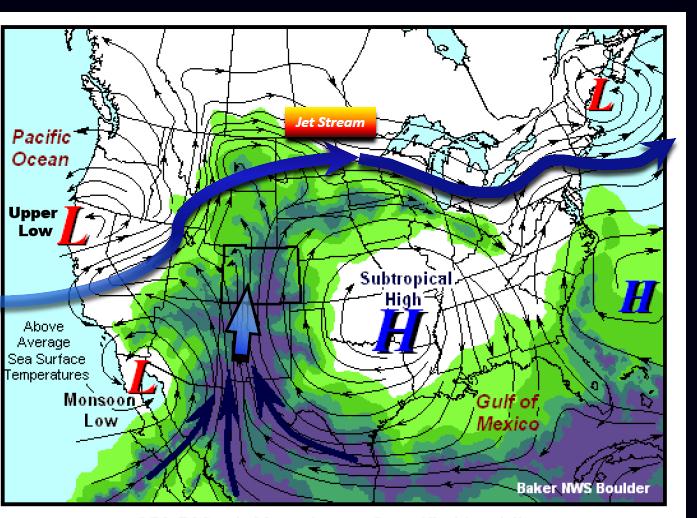
What's the North American Monsoon, and how does it impact Colorado?

The North American Monsoon (NAM) is a seasonal weather pattern that develops a persistent wind flow. The wind flow is specific and brings tropical moisture into Mexico, Arizona, New Mexico, Utah, Colorado, and sometimes Texas.
Using this image from the Boulder NWS office, note the high-pressure area over Texas (subtropical high) and the low-pressure area over/near the Baja (monsoon low). The corresponding wind flows with each feature pull in tropical moisture over the region (green colors represent tropical moisture):

This seasonal wind flow observed from late June through September in which higher than average precipitation totals are measured within the region as listed above. A more exact schedule of when this starts shown here:
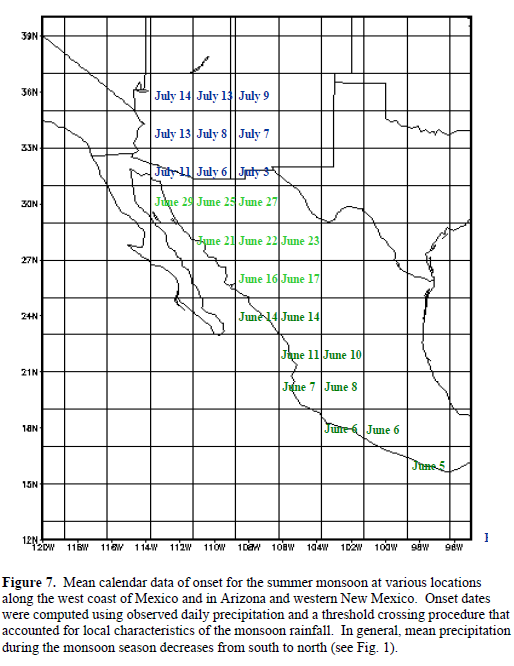
Within the monsoon's impact, there is a lot of research involving ocean conditions as well as the atmospheric characteristics as described above.
For one example, in some cases, but not all, the temperature of the northern Gulf of California needs to reach greater than 29°C for an increase in observed precipitation across Arizona. From the Desert Research Institute:
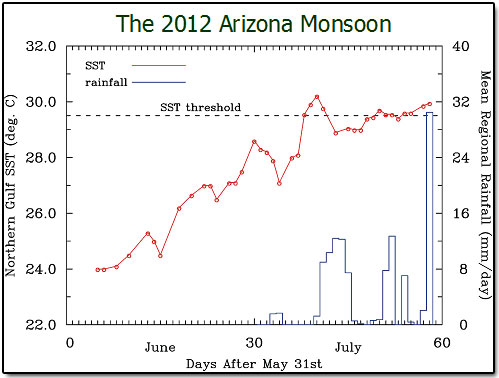
There is also research showing how climate change can possibly dry and delay the North American Monsoon a result of several impacted mechanisms.
I think the Colorado Climate Center has the best summation of what the monsoon is:
Over the southwestern United States, the NAM typically ramps up in July and persists through August. While you might observe some occasional wet days before it arrives, or some drier days after it's arrived, a fairly persistent, large-scale pattern will emerge.
Via the Princeton research briefer linked above, “Because much of the NAM region critically depends on summertime monsoonal rainfall, the results of [this research] underscore the necessity of planning future water resource management around the likelihood of reduced monsoonal rains,” said Benjamin Lintner, an associate professor of environmental sciences at Rutgers University, who was not involved in this study.
This image will help visualize the areas of greatest rainfall benefit and when:
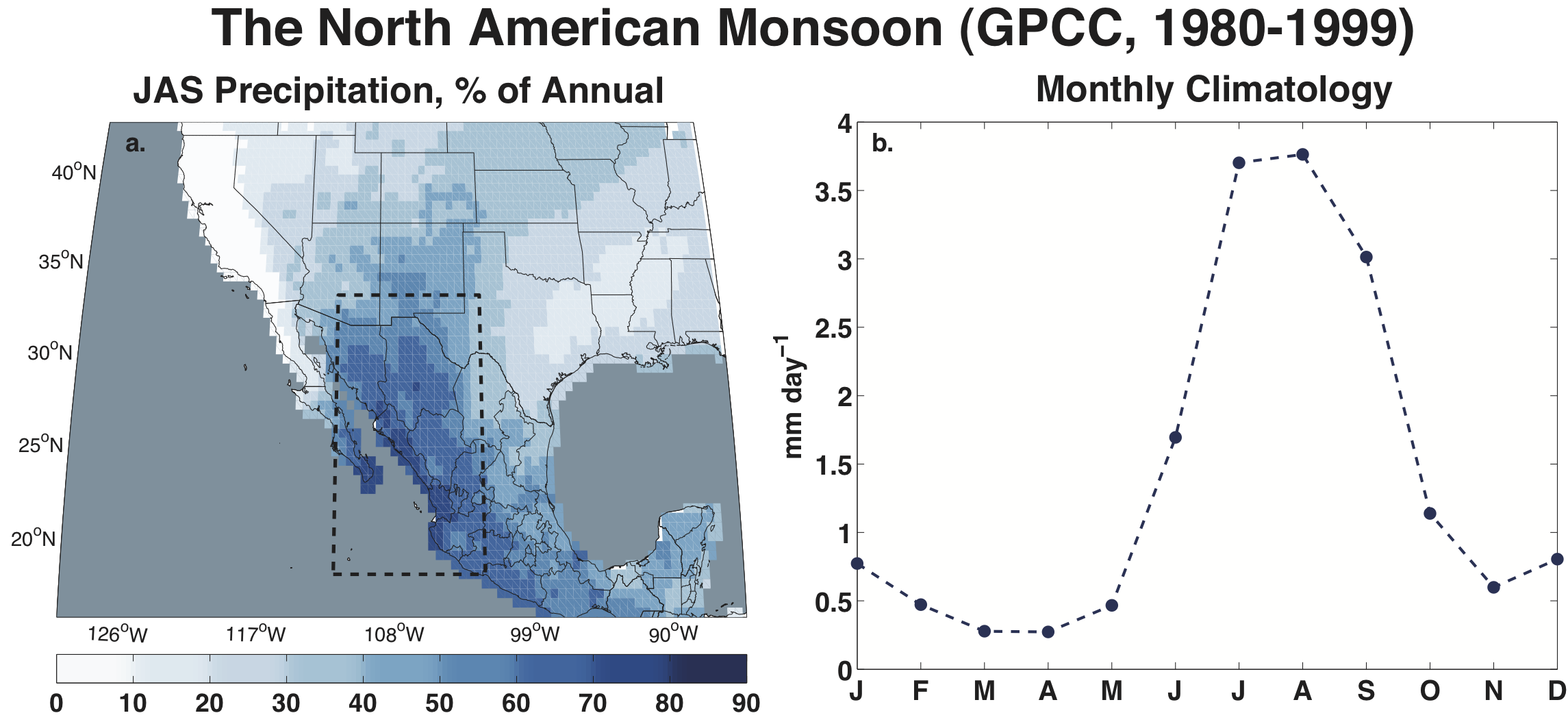
Colorado does benefit from the monsoon as you can see in the map above, plus here's Denver's annual precipitation climatology via NWS-Boulder. The annotation showing when the monsoon develops, on average:
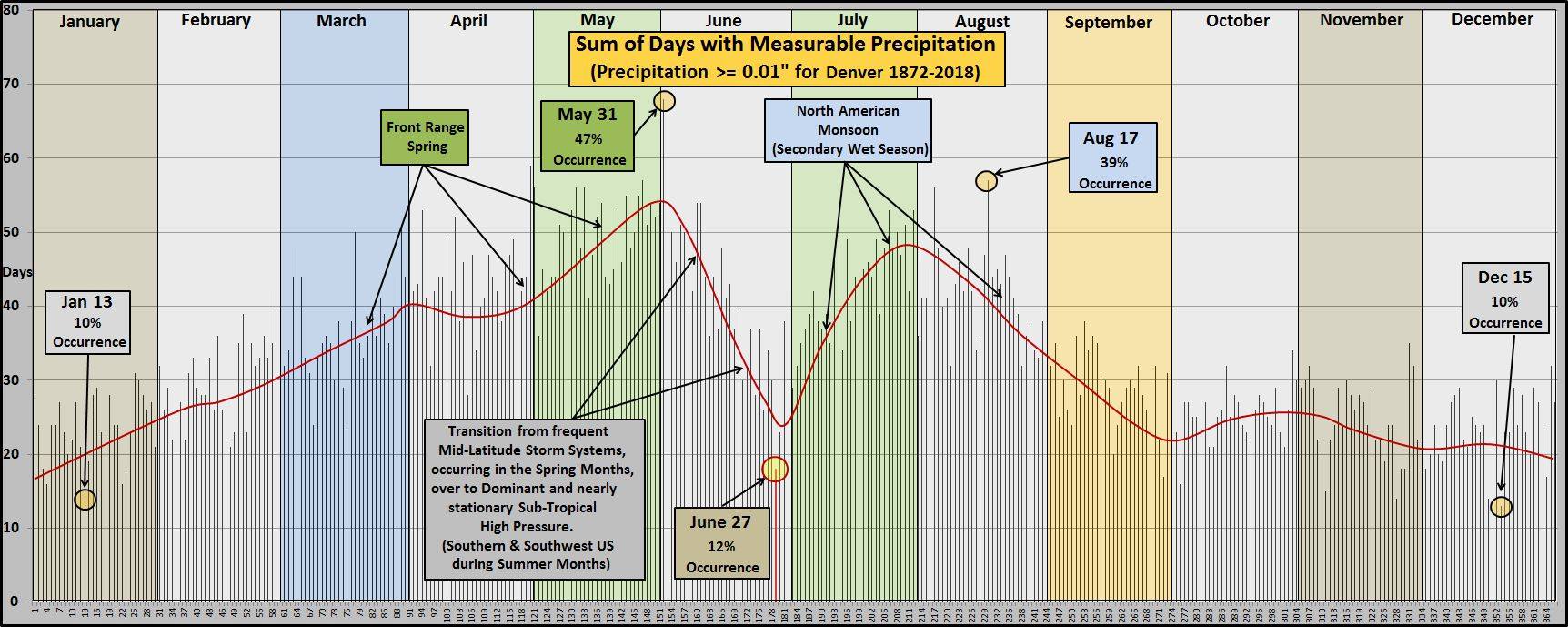
The forecast for this year's monsoon indicates a less than likely chance of substantial moisture for Colorado and much of the region. What monsoon we do see, will be a delayed one. Brian Bledsoe has posted monsoon outlooks for our Insider users. His most recent update on the monsoon forecast is here. There are some indications that what monsoon we do see this year could arrive next week... time will tell!
